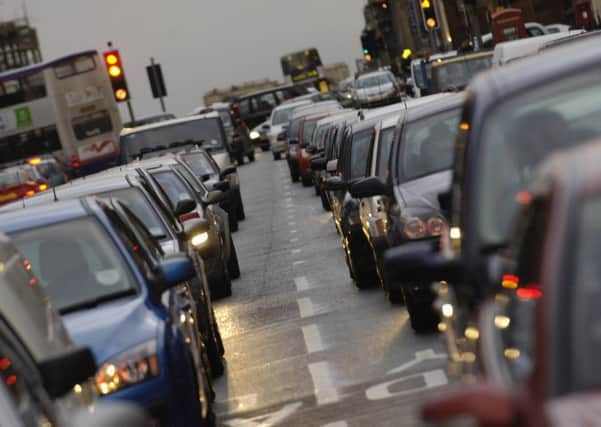Child leukaemia risk doubles near main roads


A study found those whose homes were within 150 metres of heavy traffic were 30 per cent more at risk of myeloblastic leukaemia which accounts for about one in seven childhood cases in Britain.
But, alarmingly, children most exposed to the fumes were twice as likely to develop the deadly disease.
Advertisement
Hide AdAdvertisement
Hide AdIn contrast there was no such link with the more common lymphoblastic leukaemia.
The researchers considered all 2,760 cases of leukaemia diagnosed in children under 15 in metropolitan France between 2002 and 2007, with particularly focus on the Ile de France region of Paris, and with the help of air quality data.
Dr Jacqueline Clavel, of the French Institute of Health and Medical Research, explained: “The frequency of myeloblastic type leukaemias was 30 per cent higher in children living within a 150m radius of heavily used roads, and where the combined length of road sections within this radius exceeded 260m.”
Overall, there were 418 cases of myeloblastic leukaemia diagnosed during the period of the study which has been published in the American Journal of Epidemiology.
Cancer affects more than 1,700 under 15s a year in France, which has a population of a little over 11 million children.
Surveillance of these cancers has been provided by the French National Registry of Childhood Haematopoietic Malignancies since 1990, and by the French National Registry of Childhood Solid Tumours since 2000.
With 470 new cases annually, blood cancers are the most common and are mainly the acute lymphoblastic type.
Myeloblastic, or “myeloid” affects the myeloid stem cells which give rise to the red blood cells.
Advertisement
Hide AdAdvertisement
Hide AdFive-year survival following childhood leukaemia is more than 80 per cent.
The general objective of the GEOCAP programme (GEOlocation Study of Paediatric CAncers) is to study the role of environmental exposures in the occurrence of cancer in children under 15.
Researchers believe there is an increased risk of leukaemia in children living close to heavily used roads. The increased risk of myeloblastic leukaemia for adults with a history of occupational exposure to the motor fuel chemical benzene has been known for years.
The researchers added that in keeping with the hypotheses on which the study is based, exposure to benzene related to car traffic might be one of the explanations for this association.
In the latest study, case-control allowed the assessment of exposure level to one or more risk factors for all 2,760 childhood leukaemia cases compared to a contemporary sample of 30,000 control children representative of the metropolitan population.
The researchers particularly studied the case of the Ile de France area as it is the most urbanised where the average annual concentration of benzene, mainly from road traffic, was estimated in the vicinity of each residence in a precise manner.
They observed the risk of childhood acute myeloblastic leukaemia was double in Ile de France children whose residences were the most exposed to traffic.